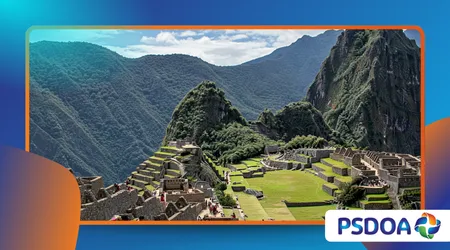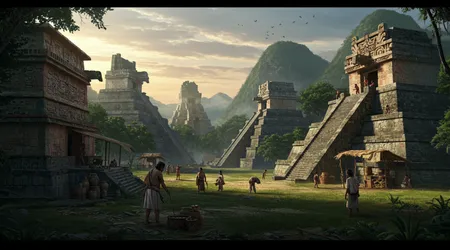The Untold History of Pre-Columbian America

This narrow focus obscures the astonishing complexity and ingenuity of the Untold History of Pre-Columbian America.
Anúncios
Before European arrival, two continents thrived with sophisticated urban centers, revolutionary agricultural science, and intricate social and political systems.
To truly understand this hemisphere, we must acknowledge the profound achievements of these societies, which rivaled or surpassed their Old World counterparts in many areas.
This in-depth exploration challenges the outdated myth of a “New World” awaiting discovery. We will illuminate the technological, architectural, and ecological advancements made by peoples from the frozen North to the dense rainforests of the South.
These forgotten histories are not relics; they are crucial keys to understanding human ingenuity and resilience.
Anúncios
The Urban Architects: Cities That Rivaled Europe
Conventional history often presents Pre-Columbian societies as primitive, but archaeological evidence unequivocally shows they built massive, intricate metropolises. These cities were hubs of trade, culture, and political power, demonstrating master-level urban planning.
Teotihuacan: The Enigmatic Giant
Long before the Aztecs, the city of Teotihuacan (near modern Mexico City) housed over 100,000 residents around 500 CE. Its monumental Pyramids of the Sun and Moon anchor a meticulously planned grid system.
The scale of this urban center rivals ancient Rome. Its influence extended far beyond its immediate region, evident in its unique architecture and art found across Mesoamerica. Teotihuacan’s power stemmed not from conquest, but from its immense economic and religious prestige.
Crucially, archaeological work confirms that Teotihuacan’s residents lived in complex, multi-family apartment compounds, some housing up to 100 people. This level of standardized, high-density housing was unmatched globally at the time, showcasing unparalleled social engineering.
++ Unearthing the Gallus Revolt: Coins and Tunnels of Resistance in Roman Galilee
Cahokia: The Forgotten North American Metropolis
Far north, in the Mississippi River Valley, lay Cahokia, the largest and most influential urban center of the Mississippian culture (1050–1350 CE). Located near present-day St. Louis, it boasted a population estimated between 10,000 and 20,000 people.
Cahokia’s central feature was Monks Mound, the largest prehistoric earthwork in the Americas. This immense structure served as the ceremonial and political heart of a vast regional trade network. Its planned layout and sophisticated mound-building techniques demonstrate a complex, hierarchical society.
The city’s rapid decline remains a mystery, likely due to a combination of environmental stress and political upheaval.
Its existence fundamentally refutes the narrative that North America was sparsely populated by simple hunter-gatherer bands. This thriving metropolis forms a vital chapter in the Untold History of Pre-Columbian America.

The Ecological Engineers: Revolutionizing Agriculture
The greatest technological contribution of Pre-Columbian America might not be monumental stone, but food science. These cultures fundamentally reshaped the global food supply through agricultural innovation.
Also read: Forgotten Maritime Empires of the Ancient World
The Birthplace of Global Staples
Three of the world’s top five food crops maize (corn), potatoes, and cassava originated in the Americas. The sophisticated domestication process for these crops required centuries of meticulous selective breeding, a monumental feat of genetic engineering.
The Andean Potato Revolution
In the high, challenging altitudes of the Andes, pre-Inca cultures domesticated over 4,000 varieties of potatoes. This diversity was essential for survival, providing resistance to pests, disease, and the region’s extreme microclimates.
They also pioneered freeze-drying techniques to create chuño (preserved potato). This process allowed communities to store the staple for years, mitigating the risk of famine. This ancient food preservation technique guaranteed stability in one of the planet’s harshest farming environments.
The Incas later formalized this system, managing massive agricultural terraces that stabilized steep mountain slopes and prevented erosion.
This extensive hydraulic and land management system showcases a profound understanding of applied ecology.
Read more: Mysterious Historical Artifacts That Defy Explanation
The Amazonian Dark Earths (Terra Preta)
In the seemingly infertile Amazon rainforest, indigenous communities created remarkably fertile soil known as Terra Preta do Indio. This dark earth, rich in carbon and nutrients, was deliberately manufactured by adding charcoal, bone, and organic waste to the low-nutrient native soil.
This ongoing anthropological research, particularly highlighted by the work of Dr. Betty J. Meggers, suggests that large areas of the Amazon were managed and engineered by human hands.
This complex soil management allowed sustained, intensive agriculture in a region previously thought to be incapable of supporting large populations.
The creation of Terra Preta is a powerful testament to the ecological knowledge embedded in the Untold History of Pre-Columbian America.
Political and Social Complexity: Beyond Empires
The political structures of Pre-Columbian societies were diverse, ranging from centralized empires to sophisticated, decentralized democracies. We must avoid reducing their political genius solely to the famous Aztecs or Incas.
The Mississippian Mound Builders and Reciprocal Governance
The Mississippian culture, exemplified by Cahokia, operated through a complex system that often centered on reciprocal exchange and ceremonial authority. Their mound centers served as political capitals, regulating trade and mediating regional disputes.
Their authority relied heavily on ritual power and the redistribution of goods, ensuring regional stability through social bonds, not just military force. This model of authority contrasts sharply with the purely military expansion models favored in contemporary Europe.
The Haudenosaunee Confederacy: A Proto-Democracy
In North America, the Haudenosaunee Confederacy (Iroquois) established a sophisticated political union centuries before European contact. Based on the Great Law of Peace, this confederacy unified five (later six) nations into a powerful, deliberative body.
The Confederacy featured checks and balances, consensus-building, and a clear division of power between different councils and clan mothers.
Some historical analysis even suggests their governing structure influenced key thinkers during the formation of the US Constitution. This advanced political model is a powerful piece of the Untold History of Pre-Columbian America.
The Maya’s Decentralized Brilliance
The Maya are famous for their astronomical and mathematical prowess, but their political system was fascinatingly decentralized. Rather than a single empire, the Maya civilization comprised numerous independent city-states linked by shifting alliances and intense rivalry.
This decentralized model allowed for immense intellectual and architectural flowering across multiple independent centers (like Tikal and Calakmul).
Their resilience, lasting over 2,000 years, speaks to the strength of this fluid political system, adapting to crises through regional shifting rather than monolithic collapse.
Summary of Key Pre-Columbian Achievements
| Civilization/Region | Achievement Area | Specific Innovation | Global Significance |
| Andes (Inca/Pre-Inca) | Agriculture/Engineering | Domestication of the Potato (4,000+ varieties), Freeze-Drying (Chuño). | Staple food source worldwide; sophisticated food preservation. |
| Mesoamerica (Teotihuacan) | Urban Planning | Grid-based city planning, multi-family apartment compounds (scale unprecedented). | Set a standard for dense, organized urban living. |
| Amazonia | Ecological Science | Creation of Terra Preta (Anthrosol/Dark Earth) for sustained fertility. | Example of sustainable, intensive agriculture in tropical regions. |
| North America (Haudenosaunee) | Governance | Great Law of Peace (Confederacy with checks and balances). | Influential early model of federal democracy. |
Conclusion: A Global Heritage Reclaimed
The Untold History of Pre-Columbian America is a vast tapestry of innovation, resilience, and complexity. From the pyramids of Teotihuacan to the carefully engineered soils of the Amazon and the democratic structures of the Haudenosaunee, these civilizations were operating at the apex of human achievement. Their impact on global agriculture, urban planning, and governance is undeniable.
Acknowledging this true history is essential for correcting the historical record and appreciating the full scope of human ingenuity.
We must continue to support the archaeological and anthropological research that brings these vital narratives to light.
Why do we allow these foundational chapters of global history to remain obscured? Share your thoughts on which Pre-Columbian innovation deserves the most recognition in the comments below!
Frequently Asked Questions (FAQs)
Q: Why is so much of Pre-Columbian history still considered “untold” or unknown?
A: The primary reasons are devastating. First, European contact introduced diseases that wiped out up to 90% of the population, leading to massive societal and informational collapse.
Second, conquerors actively destroyed records, libraries, and temples (like the Mayan codices) to suppress local culture and facilitate control.
Third, archaeological evidence in tropical and highly farmed areas is often quickly degraded or buried, making discovery extremely challenging.
Q: Was the wheel known in Pre-Columbian America?
A: Yes, the concept of the wheel was known, primarily evidenced by wheeled toys found in Mesoamerica. However, its practical application for transportation or heavy machinery was limited.
Scholars believe this was due primarily to the lack of draft animals (horses, oxen) suitable for pulling wheeled vehicles, which were extinct in the Americas after the last Ice Age. Human labor was the primary power source.
Q: Did the ancient cultures of the Americas have a writing system?
A: Yes, several did. The Maya developed the most sophisticated and fully functional writing system in the Americas, using complex hieroglyphs. The Zapotec and Olmec also had early scripts.
The Inca, however, used a unique system called quipu knotted strings to record complex numerical and historical information, functioning as a three-dimensional accounting and narrative system.
